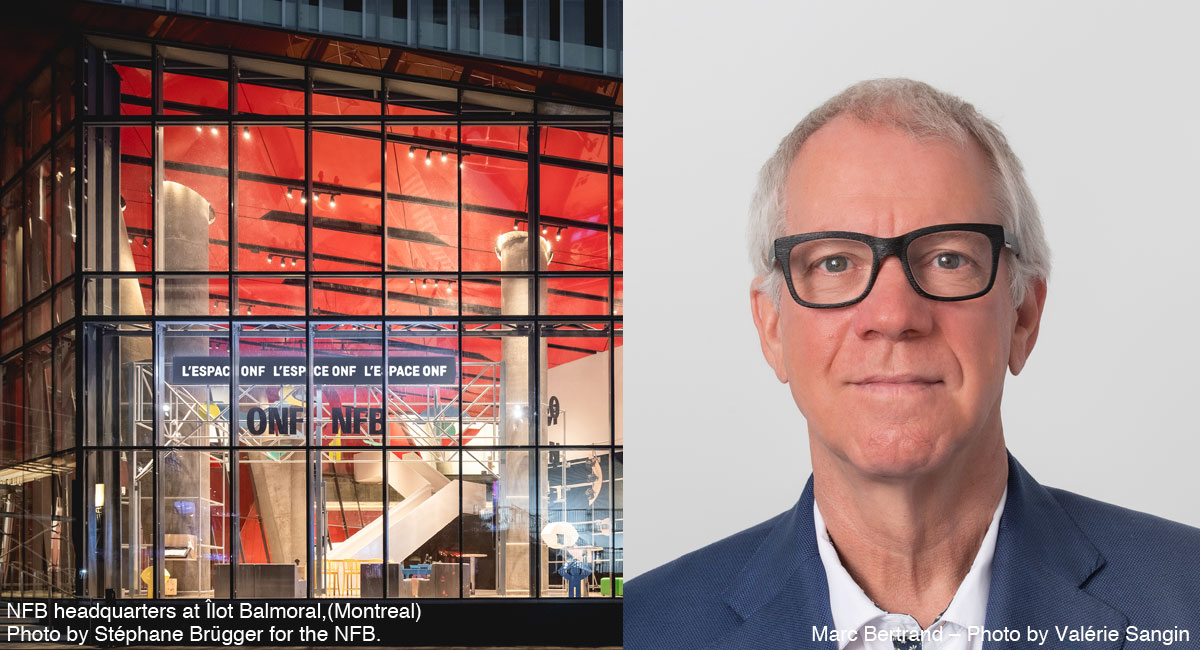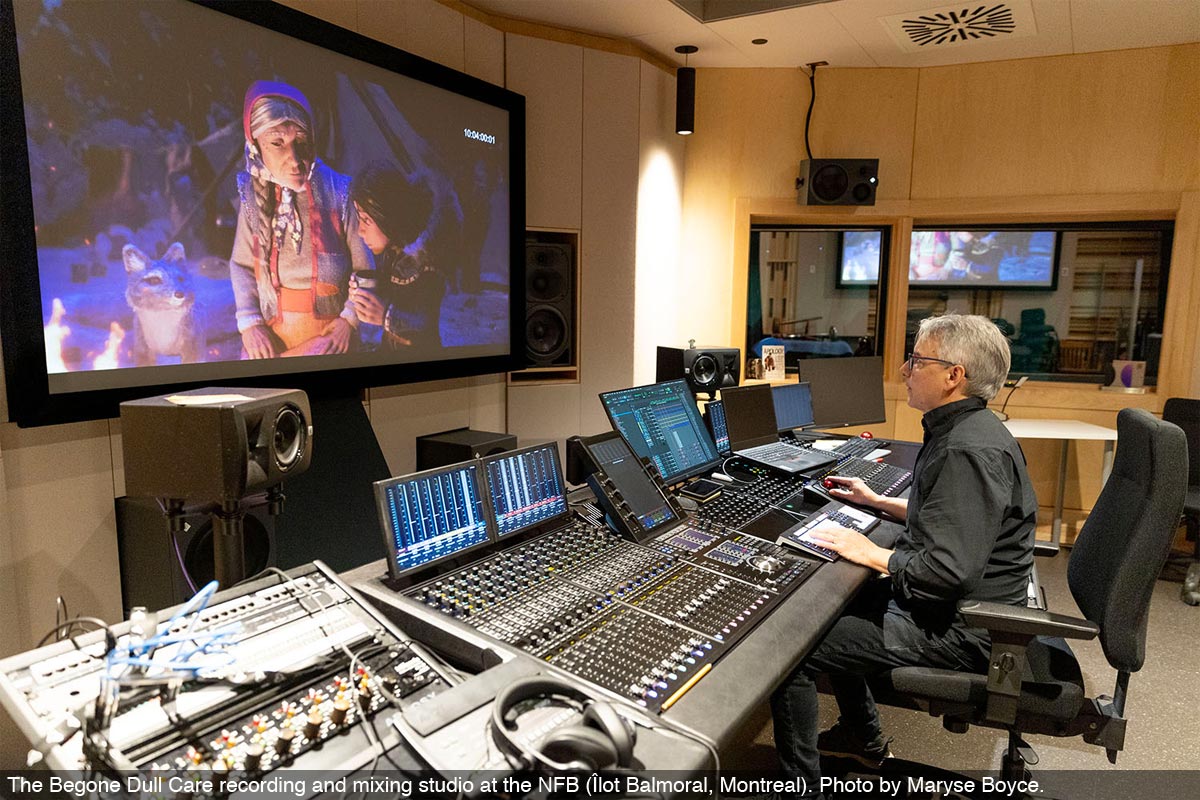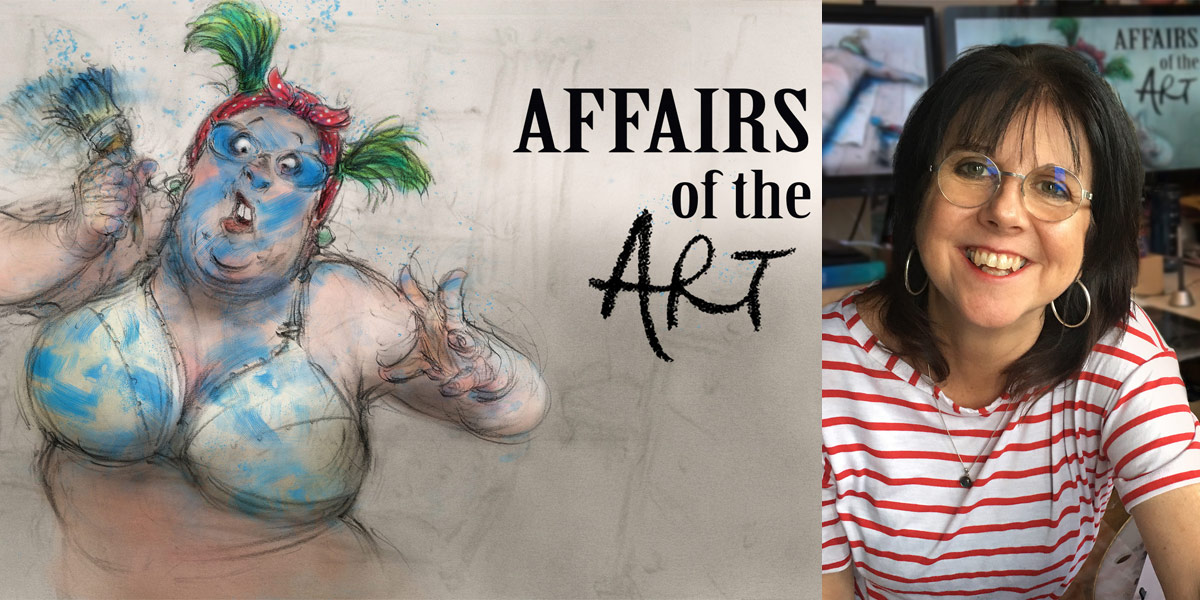NFB has been doing international co-production of animated short films along with producing internationally-released Canadian animated short films. In this article, we explore the journey of an international film project at NFB, from the beginning of the project to its production and completion, through an interview with Marc Bertrand, a producer at NFB.
Marc joined the NFB’s French Animation Studio as a producer in 1998. Since then, he has been producing more than 125 films of many emerging and veteran directors including Jacques Drouin, Andreas Hykade, and Michelle Kranot and Uri Kranot. Many of the films are award winners, such as Theodore Ushev’s Oscar®-nominated Blind Vaysha (2016) and The Physics of Sorrow (2019) (Cristal Award winner for best short film at Annecy International Animation Film Festival 2020), and Patrick Doyon’s Oscar®-nominated short film Sunday (2011).
Interview with Marc Bertrand
Hideki Nagaishi (HN): NFB has been producing multi-award-winning animated short films with Canadian directors one after another for many years. In addition, NFB has been co-producing great animated films from creators and studios outside of Canada.
Could you please let us know your thoughts on the significance and aims on those international co-productions?
Marc Bertrand: The National Film Board of Canada’s international co-productions hold pivotal significance for a wide range of reasons. Diversity drives these collaborations; they foster global cultural exchange and enrich the NFB’s animation collection with varied perspectives and artistic styles. Technological innovation flourishes. Partnerships with international creators bring fresh ideas, pushing the boundaries of animated filmmaking.
Global impact is a key outcome. These co-productions elevate the NFB’s influence on an international stage, showcasing Canadian excellence and attracting diverse talent and partnerships. Educational opportunities abound, offering Canadian animators valuable learning experiences within different artistic philosophies and production methods. Market expansion is a natural consequence. Partnerships open global markets, benefiting the NFB, our co-producers and the Canadian animation industry by expanding our reach.
In summary, international co-productions align seamlessly with the NFB’s commitment to creativity, diversity and excellence in animation—contributing to the enrichment of the global animation landscape.
HN: NFB’s activities are wide-ranging. Could you please let us know all about your support that overseas directors can receive when NFB takes part in their film project as the main or a co-producer?
Marc Bertrand: As Canada’s public producer and distributor, the NFB is actively engaged in the entire filmmaking process. Emphasizing early involvement in the life of a project, we contribute significantly to scripting, address the technical aspects of animation and maintain an in-house post-production team.
Our operational model often involves initiating the development phase in other countries, where we leverage local expertise. Subsequently, animation frequently takes place in partner countries, while sound, music and post-production often culminate at the NFB. However, it’s crucial to emphasize that our approach isn’t one-size-fits-all; each project is unique.
Central to our credibility is a profound belief in creative engagement across all production units, fostering a cooperative environment. At the NFB, we actively shape projects, ensuring a collaborative journey and a dynamic filmmaking process, from initial concept through to completion.
HN: I would like to hear about NFB’ two studios (in Montreal and Vancouver, Canada). What are the differences between these two studios and what do you think are the attractive points for foreign filmmakers to develop films with those studios?
Marc Bertrand: In Montreal, we house two distinct animation studios, differing solely in the language in which they operate. Led by executive producer Rob McLaughlin, the English studio works in English, under the guidance of producers Jelena Popović and Maral Mohammadian. The French animation studio, led by executive producer Christine Noël, assisted by me, conducts its operations in French.
Exceptions to this language-based production structure arise based on the affinities shared between producers and directors, and the unique requirements of each project. Our approach shows the flexibility and adaptability of our studios. We tailor language choices to the collaborative dynamics that best serve the creative vision and objectives of the project.
HN: In addition to the previous question, will accommodation be provided to foreign directors of short film projects produced by NFB, so that they can work long-term at these studios?
Marc Bertrand: It’s essential to clarify that the NFB engages in co-productions only when a foreign director secures a producer and funding in their country of origin. Additionally, the country must have a production mini-treaty with Canada to allow for a co-production agreement. During budgeting, both producers determine how various costs will be allocated.
Crucially, we insist on having foreign directors spend dedicated time in our studios, fostering a collaborative environment. Accommodation is part of the co-production agreement, which ensures an immersive experience for the director. This approach not only streamlines logistics but also facilitates a productive, enriching partnership throughout the filmmaking process.
HN: I would like to know about the stories behind NFB’s bright achievements on international co-production of animated short films by foreign directors.
Are you checking or attending specific film festivals each year for finding great directors and film projects outside of Canada? Do you have any criteria on films for selecting a director you will consider producing their next film with?
Marc Bertrand: In our quest to discover exceptional directors and film projects beyond Canada, we meticulously program within the intricate landscape of our French and English animation studios, scrutinizing their potential for foreign co-productions.
Our criteria for selecting directors and projects are multifaceted. We prioritize diversity and equity in creative teams and directorial choices, emphasizing diversified perspectives. Financial factors, including our studio’s capacity for new projects, are integral. New projects must be fresh and challenging, whether technically or narratively. We don’t want to duplicate production experiences; with each film, we hope to push boundaries.
Notably, we avoid animation series, looking beyond commercial considerations. Our auteur-focused productions nurture unique approaches and storytelling. Actively seeking projects that epitomize the notion of doing “what nobody else can”, we participate in international animation festivals in Annecy, Zagreb and Ottawa.
While we welcome all submissions, our preference is for short creative projects. This aligns with festival programmers’ preferences and underscores our commitment to telling many distinctive stories in the lively realm of animation.
HN: For you, what are the unique attractiveness of international co-production of animated short films, in comparison to producing Canadian films?
Marc Bertrand: While my primary role as an NFB producer involves Canadian productions, the allure of international co-productions for animated short films is compelling. A rich diversity of perspectives, artistic approaches and storytelling techniques emerge through collaboration with creators around the world.
These international projects unfold as an immersive journey — they offer a tapestry of cultural influences that challenge norms and expand creative boundaries. The exchange of viewpoints enriches stories and stimulates innovative techniques and styles. These collaborations are also dynamic. They align with the NFB’s commitment to evolving creatively and contributing meaningfully to the global animation community.
Eugene Ionesco wisely said, “To change your point of view, you have to move around.” This resonates in regard to our embrace of international co-productions. They provide a fresh vantage point, enhancing our ability to navigate diverse creative landscapes, and fostering a truly global dialogue in the vibrant world of animated storytelling.







